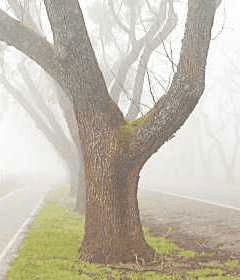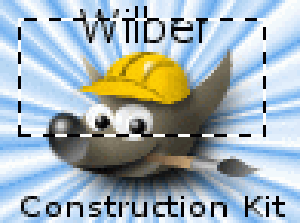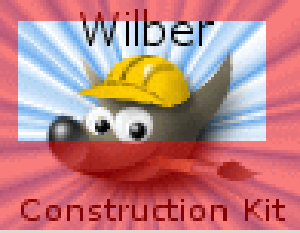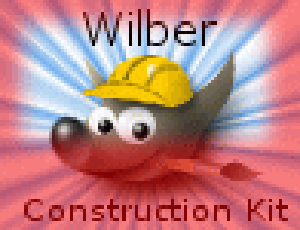Often when you operate on an image, you only want part of it to be affected. In GIMP, you make this happen by selecting that part. Each image has a selection associated with it. Most, but not all, GIMP operations act only on the selected portions of the image.
There are many, many situations where creating just the right selection is the key to getting the result you want, and often it is not easy to do. For example, in the above image, suppose I want to cut the tree out from its background, and paste it into a different image. To do this, I need to create a selection that contains the tree and nothing but the tree. It is difficult because the tree has a complex shape, and in several spots is hard to distinguish from the objects behind it.
Now here is a very important point, and it is crucial to understand this. Ordinarily when you create a selection, you see it as a dashed line enclosing a portion of the image. The common, not entirely accurate, idea you could get from this, is that the selection is a sort of container, with the selected parts of the image inside, and the unselected parts outside. Although this concept of selection is okay for many purposes, it is not entirely correct.
사실 선택은 채널처럼 구현이 되므로, 내부 구조는 이미지의 빨강, 녹색, 파랑, 알파 채널 등과 동일합니다. 따라서 선택은 이미지의 각 픽셀에 0(선택안됨) 에서 255(완전히 선택됨) 의 값을 가지게 됩니다. 이러한 특징은 0 과 255 사이의 값을 가짐으로써 일부만 선택된 픽셀의 존재를 허용하게 됩니다. 이는 선택 영역과 비선택 영역의 부드러운 전환이 사용되는 상황에서 종종 확인할 수 있습니다.
자, 이제 선택을 하면 점선이 보이는지 확인합니다.
The dashed line is a contour line, dividing areas that are more than half selected from areas that are less than half selected.
While looking at the dashed line that represents the selection, always remember that the line only tells part of the story. If you want to see the selection in full detail, the easiest way is to click the Quick Mask button in the lower left corner of the image window. This causes the selection to be shown as a translucent overlay atop the image. Selected areas are unaffected; unselected areas are reddened. The more completely selected an area is, the less red it appears.
Many operations work differently in Quick Mask mode, as mentioned in the Quick Mask overview. Use the Quick Mask button in the lower left corner of the image window to toggle Quick Mask mode on and off.
With the default settings, the basic selection tools, such as the Rectangle Select tool, create sharp selections. Pixels inside the dashed line are fully selected, and pixels outside completely unselected. You can verify this by toggling Quick Mask: you see a clear rectangle with sharp edges, surrounded by uniform red. Use the “Feather edges” checkbox in the Tool Options to toggle between graduated selections and sharp selections. The feather radius, which you can adjust, determines the distance over which the transition occurs.
If you are following along, try this with the Rectangle Select tool, and then toggle Quick Mask. You will see that the clear rectangle has a fuzzy edge.
Feathering is particularly useful when you are cutting and pasting, so that the pasted object blends smoothly and unobtrusively with its surroundings.
It is possible to feather a selection at any time, even if it was originally created as a sharp selection. Use → from the main menu to open the Feather Selection dialog. Set the feather radius and click . Use → to do the opposite—sharpen a graduated selection into an all-or-nothing selection.
![[참고]](images/note.png)
|
참고 |
|---|---|
|
기술적 설명 : 페더링은 선택 채널에 특정 반경값의 가우시안 블루어를 적용한 것과 같은 것입니다. |
You can set layer opacity, but you cannot do that directly for a selection. It is quite useful to make the image of a glass transparent. Use the following methods to set the layer opacity:
-
For simple selections, use the Eraser tool with the desired opacity.
-
For complex selections: use → to create a floating selection. This creates a new layer with the selection called “Floating Selection” (4.5절. “Float”). Set the opacity slider in the Layers dialog to the desired opacity. Then anchor the selection: outside the selection, the mouse pointer includes an anchor. When you click while the mouse pointer includes the anchor, the floating selection disappears from the Layers dialog and the selection is at the right place and partially transparent (anchoring works this way only if a selection tool is activated: you can also use the Anchor Layer command in the context menu by right clicking on the selected layer in the Layers dialog).
And, if you use this function frequently: Ctrl-C to copy the selection, Ctrl-V to paste the clipboard as a floating selection, and → to turn the selection into a new layer. You can adjust the opacity before, or after creating the new layer.
-
Another way: use → → to add a layer mask to the layer with the selection, initializing it with the selection. Then use a brush with the desired opacity to paint the selection with black, i.e. paint it with transparency. Then → → . See 2.1.4절. “Layer masks”.
-
To make the solid background of an image transparent, add an Alpha channel, and use the Magic Wand to select the background. Then, use the Color Picker tool to select the background color, which becomes the foreground color in Toolbox. Use the Bucket Fill tool with the selected color. Set the Bucket Fill mode to “Color Erase”, which erases pixels with the selected color; other pixels are partially erased and their color is changed.
The simplest method is to use → , which gives complete transparency to a selection.







